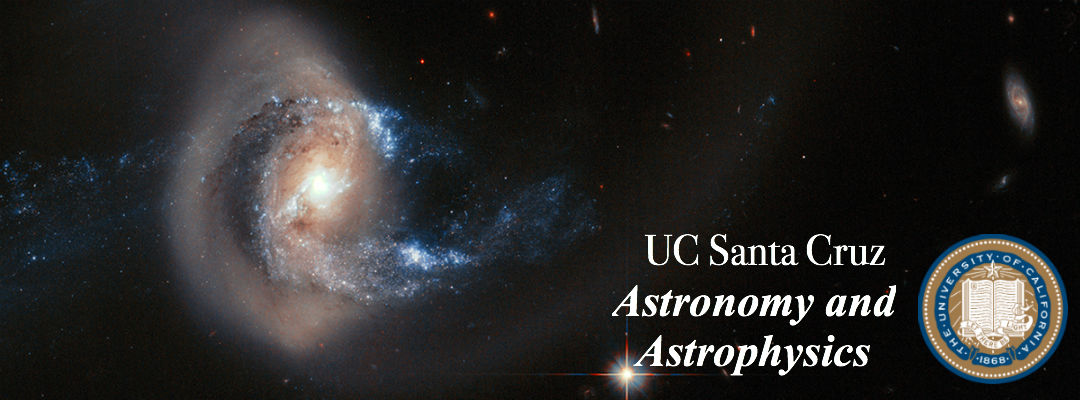About the Department
UC Santa Cruz is a world-renowned leader in the fields of astronomy and astrophysics. Our scientists have designed new pathways for observational discovery from Earth and from space. They designed the Fermi Gamma-ray Space Telescope, the Keck Telescopes on Mauna Kea, and the Automated Planet Finder at Lick Observatory—and figured out how to fix the flawed optics on the Hubble Space Telescope. They partner in NASA exploration, including the Kepler planet-finding telescope and Cassini mission to Saturn.
They push technology in ways that allow us to look farther and see better. Constraints on the size of telescopes were shattered with our invention of segmented mirror technology as an alternative to a single slab of glass. Our scientists conceptualized the role of dark matter in shaping the structure of the universe. Our pioneering work with the world’s fastest computers is unveiling the secrets of the universe through computational analysis and visualization of mind-boggling phenomena: merging black holes, exploding stars, and the formation and evolution of galaxies. We launched and lead the field of adaptive optics, critical in allowing astronomers to correct the blurring effect of turbulence in the Earth’s atmosphere.
UC Santa Cruz manages the UC Observatories, which operates the Lick Observatory on Mt. Hamilton, oversees UC’s partnership in the W.M. Keck Observatory in Hawaii, and is the central coordinator for UC’s participation in the international Thirty Meter Telescope project.
Our faculty and alumni have received highest honors—from international research prizes and elections to the National Academy of Science, to a Niels Bohr professorship for Enrico Ramirez-Ruiz, to the Kavli Prize awarded to emeriti professor Jerry Nelson and the National Medal of Science awarded to emeriti professor Sandra Faber.
We are focused in three centers of discovery:
- Theoretical Astrophysics Santa Cruz (TASC). A true interdisciplinary approach to scientific computation and the visualization of the universe. With the use of supercomputers we test complex theories of our dynamic universe. Our partners include the UC Santa Cruz Digital Arts and New Media Center.
- Other Worlds Laboratory (OWL). A comprehensive research effort to find and understand planets around other stars and explore the diversity of our own solar system. Through new observations and sophisticated computer modeling we strive to understand how planets form and evolve over time and whether life exists on worlds beyond the Earth.
- Institute for Astronomical Instrumentation Research. Harnessing our expertise in developing the new technologies that will form the foundation for the world’s largest telescopes and other instruments.

